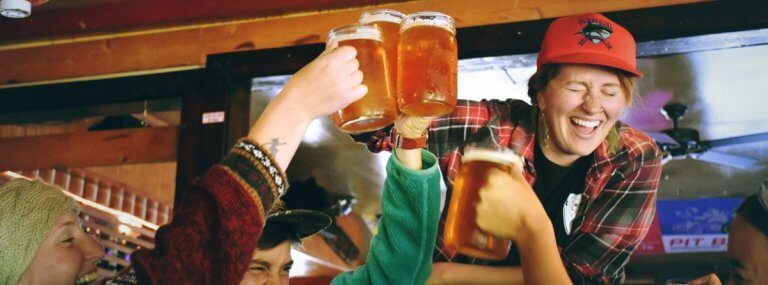
‘Party College’ may sound like a huge oxymoron the first time you hear about the concept.
In the US, however, Party Colleges are a thing worthy of several rankings of their own, including The Princeton Review‘s Best 382 Colleges and the recently-published Niche‘s 2018 Top Party Schools.
Before we reveal which institutions landed top awards in Niche‘s list this year, a quick dive into the history and meaning of party colleges is obligatory.
We can trace the existence of this quirky concept as far back as September 1968 when the infamous American adult magazine Playboy christened the University of Wisconsin at Madison as “the party school” for having the most “permissive” campus culture out of their sample of 25 universities. Fast-forward 19 years, and you now have the full-blown list in 1987, when Playboy published a ranking of forty US colleges and universities.
Ohio University now top ‘Playboy’ party school: How you reacted on Twitter http://t.co/NOPSv0w7g0 pic.twitter.com/H1NUfmAN7q
— The Post (@ThePost) September 17, 2015
California State University, Chico was dubbed the “craziest campus in the nation” based on the magazine’s staff interviews with campus club leaders, dorm rush chairmen, fraternity presidents and other campus social studs at more than 250 schools nationwide.
Many college students were offended their schools didn’t get a mention within this inaugural ranking. Rest assured, many other rankings have sprung up since with tighter methodologies to bestow the honour of everything from the most lit party scenes, to the truly deserving higher education institutions in the land of good ol’ Uncle Sam.
The most quoted resource in recent years is the sub-category ‘Party Schools’ in Princeton Review‘s annual publication of 62 college rankings lists, which range from the no-nonsense like Great Financial Aid to lists with titles such as the Birkenstock-Wearing, Tree Hugging, Clove-Smoking Vegetarians.
Unsurprisingly, it happens to be alcohol and drugs that feature most heavily in the student survey it uses to determine the ranking for The Princeton Review, as well as the number of hours students spend studying outside of class and the popularity of the fraternities and sororities at their school. As you may have guessed, those with the highest usage of alcohol and drugs on campus, combined with low personal daily study hours outside of class and high popularity of frats and sororities land top positions on the “Party Schools” list.
Source: Giphy
Niche‘s latest Top Party Schools ranking is slightly different. Nearly three-quarters of the methodology’s weightage has been placed on student surveys about the party scenes at their respective schools. The rest measures the school’s access to bars and restaurants, how well the school performs in sporting events and the quality of Greek Life on campus.
By these measures, the top award this year goes to New Orleans’ Tulane University, followed by the University of Georgia and Miami University.
One Tulane student described it as one “big party school” thanks to its students’ frequency of going out: “Typically people go out Tuesday-Saturday and most people come here knowing its a big party school, so everyone is always down to go out.”
Another student at Miami University wrote: “If you want to party on almost any given night of the week, you can party. If you can’t find a party the bars are open every night, and every night of the week [there’s] a different drink special or something to entice you to come out on a Wednesday night when you have a class at 8:30 the next morning.”
Here are the rest of the colleges that rounded out the top 20 on Niche‘s list:
1. Tulane University, New Orleands
2. University of Georgia, Georgia
3. Miami University, Ohio
4. University of Iowa, Iowa
5. Florida State University, Florida
6. West Virginia University, West Virginia
7. University of Texas-Austin, Texas
8. Penn State, Pennsylvania
9. Indiana University, Bloomington, Indiana
10. University of Illinois at Urbana-Champaign, Illinois
Liked this? Then you’ll love these…
In generational shift, college Republicans poised to reform party on climate change
The funniest complaints students made about US colleges online







